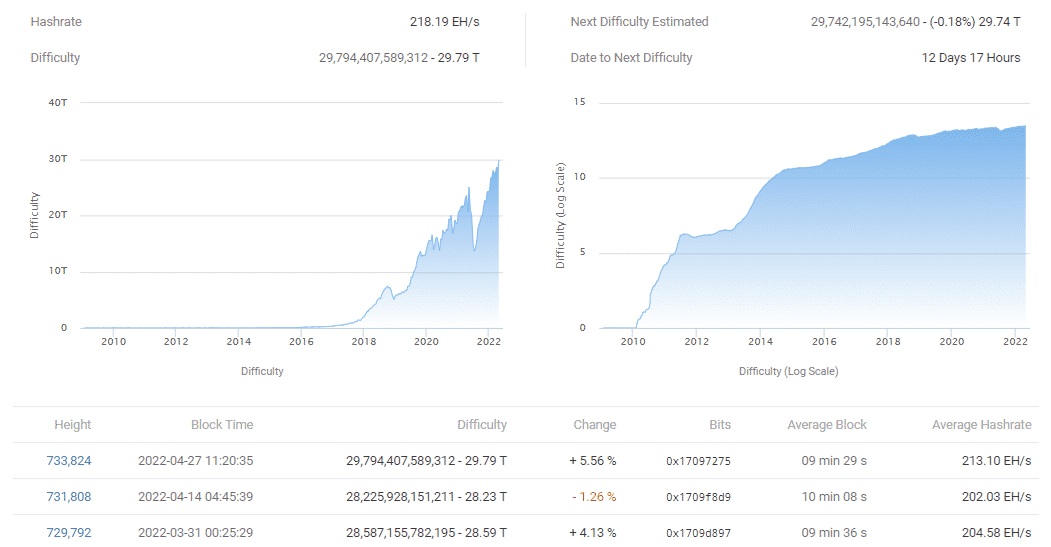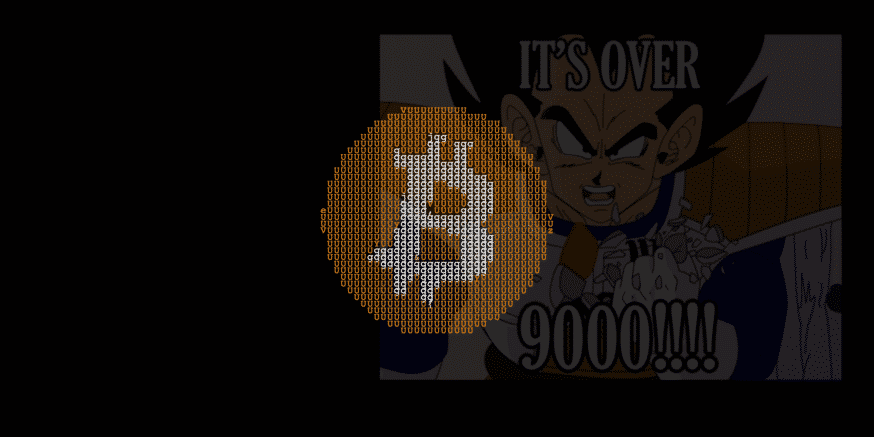The Bitcoin (BTC) hashrate and mining difficulty has reached new all-time highs today, as BTC had a rather rough month by falling below $39k.
Lifetime Peaks for Mining Difficulty and Hashrate
The mining difficulty of the largest cryptocurrency in the market, Bitcoin, has risen by 5.56% on Wednesday, hitting a record of 29.79 trillion at block height of 733,824, as per data collected from Coin Metrics and BTC.com.

Zooming out, we can see the mining difficulty has increased by roughly 30% since a year ago when the numbers were sitting at 23.58T. However, this percentage follows an explosive upward movement starting in September 2021, shortly after a cooling down period in the previous months.
BTC’s hashrate is also on the rise and has fluctuated a lot in the last couple of weeks. The hashrate was running at a high of 220.50 EH/s (exahashes per second) at the beginning of this week —up 9% from its previous high on April 14. That number now sits at 218.15 EH/s. However, on April 23, the hashrate broke records by tapping a high of 271.19EH/s at block 733,197.
Foundry USA Taking the Lead
Further data from BTC.com revealed that Foundry USA, one of the top BTC miners, has been capturing 87 of the 473 blocks mined over the last four days. Foundry is one of the largest Bitcoin mining pools and commands almost 19% of the global hashrate. In the second position is Antpool, which captured 75 out of the 473 blocks mined and commands 15.86% of the total processing power.
BTC’s mining difficulty is a measurement unit that refers to the degree of difficulty in finding the right hash for each block. The difficulty levels are adjusted every 2,016 blocks, which usually takes around two weeks. Mining hashrate isn’t the same as mining difficulty —the first one refers to how much computing power per second is required to mine blocks. However, mining hashrate and difficulty go hand in hand. When the hashrate increases, mining difficulty follows.
At the time of writing, there are 106,167 blocks left until the next halving, which is expected to occur in April 2024. Each halving occurs every 210,000 blocks or four years. with blocks taking an average of 10 minutes to mine.
When halvings take place, the reward for mining BTC transactions gets cut in half. As per today’s BTC exchange rates, the current block subsidy is 6.25 BTC, or around $245,000. After the halving, it will be 3.125 BTC (roughly $125k.)
Miners are rewarded with BTC for maintaining network integrity. All the Bitcoins that aren’t in circulation are stored in a pool used to reward miners each time they validate transactions and create new blocks. After all the 64 total halvings take place, all 21 million Bitcoins will be in circulation and there will be no more rewards for miners.
Never Miss Another Opportunity! Get hand selected news & info from our Crypto Experts so you can make educated, informed decisions that directly affect your crypto profits. Subscribe to CoinCentral free newsletter now.










